Types of Fasteners: The Complete Guide
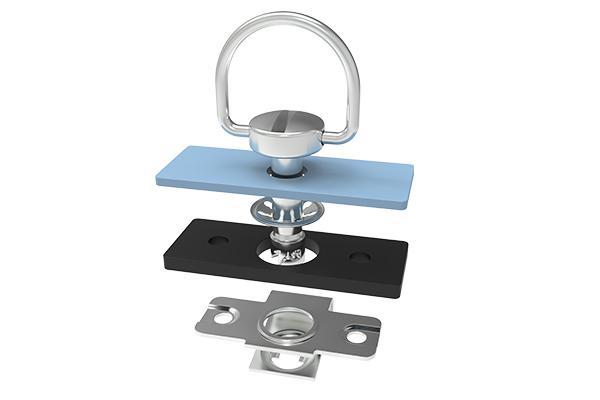
Engineers may overlook fastener choice when designing their products. Fasteners are a key product design consideration. Engineers who do not have a background in this area may struggle to find the right fastener for their application. There are an overwhelming number of fastener options available. Engineers need to consider a number of factors, from material choice to environment, when choosing the right fastener.
Before jumping into design considerations, let’s discuss background information on fasteners.
TABLE OF CONTENTS
What is a Fastener?
A fastener is a hardware device that mechanically joins or affixes two or more objects together. Engineers can use fasteners to create non-permanent joints that can be removed or dismantled. Fastener assemblies or systems can include a variety of hardware components. These assemblies may include a bolt, a screw, a stud joining with a nut, a retainer, or another device.
Fasteners can improve product performance in many ways. For example, these hardware devices provide touch points for egress or removal of panels for access to internal equipment for servicing or maintenance. Users would not be easily able to access the enclosure otherwise.
Types of Fasteners
There are countless types of fasteners that engineers can use in their product designs. Some examples of fasteners are bolts, screws, nuts, grommets, rivets, and studs. Here are some of the most common fasteners that Southco uses.
-
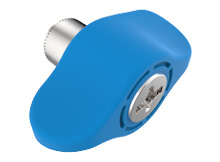
Screws
Screws are externally threaded fasteners that mate with a preformed internal thread. Users can easily lose standard screws during operation. Soutcho uses captive screws in fastener assemblies. Captive screws stay secure to a panel to help prevent hardware loss and protect sensitive electronics. When captive screws are unfastened, they remain securely attached to the outer panel. This type of screw has spring ejection and self-aligning float for easy user installation. The threads ensure a secure connection. -
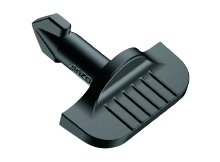
DZUS® Quarter-Turn Fasteners
DZUS® Quarter-Turn Fasteners allow engineers to create a quick, but secure, assembly. Users are able to easily and quickly secure or release the fastener with a simple 90 degree turn. DZUS fasteners provide a strong, consistent clamping force that stays securely fastened even when under vibration. This type of fastener stays securely attached to the panel for ease of use and preventing lost hardware. -
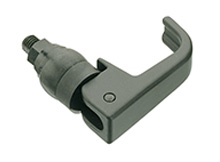
Quick Access Fasteners
Quick Access Fasteners provide quick and easy installation and removal. Users will never lose the fastener as it stays secured to the panel. The fastener stays securely fastened even under vibration and provides a consistent clamping force. This type of fastener can minimize installation costs, provide faster service, withstand application vibration, and make end user operation more intuitive. -

Rivets
Rivet is a fastener with a head on one end and stem, known as a tail, at the other end. This type of fastener creates a permanent bonding with a clean exterior surface. Southco rivets are tamper-resistant to resist being driven through or drilled out. Users can easily install drive rivets without special tools. The rivets come in corrosion resistant materials, such as aluminum and stainless steel, to ensure long-term use. -
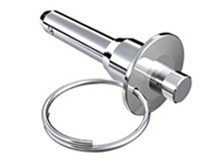
LOCKWELL Quick Release Pins
LOCKWELL quick release pins provide quick and easy engagement for applications requiring frequent, repetitive use. The quick release pin has a button users can engage to secure or release the pin. Users are able to operate these fasteners with one hand. A spring-loaded internal shaft re-engages detent balls for a snug fit when the button is released
How to Choose the Right Fastener?
Choosing the right fastener for your application can be a difficult task. The basics of choosing the right fastener is to size to best fit the aesthetics of the application and to meet strength requirements. Engineers should use a fastener that is not too big or too small and will not fail during operation. Fastener installation methods include self-clinching for threaded nuts to clip-on or snap-in for receptacles. Studs, bolts, and screws can be attached to a panel by using a retainer.
Here are some other design considerations engineers should keep in mind when choosing the right fastener for their product.
Material
Engineers should carefully choose what material is ideal for their application. Steel, stainless steel, and thermoplastics are common fastener materials. Each of these materials have different cost and performance characteristics. Engineers have to consider static load force requirements in their application. Choosing a material that cannot withstand the forces during normal operation could lead to failure.
Steel and stainless steel provide high to medium load performance. Meanwhile, thermoplastic has a low rating when it comes to load performance. This material choice largely depends on the end application. For example, the access panel must hold firmly onto the frame of the car while experiencing all of the forces and vibrations that occur when a car drives down a road. An all metal system is typically used due to the high strength of the material.
Lifecycle
Engineers have to consider how long the fastener will last in operation. Cycle life performance is dependent on the number of expected times users will fasten and unfasten the device, plus the design and material of the fastener. The operating environment may also impact the cycle life of the fastener. Extreme high or low temperatures and salt corrosion may have detrimental effects on the cycle life expectancy.
For example, a car access panel will need to be removed to service the vehicle while performing routine maintenance. The fastener should be able to withstand the user unfastening and fastening the panel. Since the car will have regular maintenance throughout its lifetime, the fastener should be designed to have a cycle life equal to or greater than the expected service life of the vehicle. Southco offers fastener designs for high and moderate cycle lives.
Application Environment
One of the main factors in fastener choice will be the environment that the product will be operating in. Engineers should understand the vibration and shock that the fastener will be exposed to. Other moving parts, dropping the panel, and other operating conditions can vibrate and shock the fastener which can lead to unfastening. For example, a car access panel fastener will be constantly exposed to vibrations from the car operating.
Engineers should fully understand the temperature, chemical, and sunlight conditions that the fastener will be exposed to. Fasteners that are exposed to outdoor environments with sun and wind will likely degrade faster than if the product was only exposed to indoor environments. Chemical exposure from materials, such as oils and cleaning chemicals, could compromise the quality of the fastener. A car access panel is often made of plastic to resist outdoor exposure. The fastener will need to withstand the same conditions without corroding.
Security Requirements
Engineers may be designing products that have certain security requirements. Hand operable fasteners are used when there is no need for high security. Engineers can use wing, bail, and knob style fasteners for various low-security needs. These fasteners are designed for maximum ease of use.
To improve security some fasteners can only be operated with certain tools. This limits access to the enclosure to users who have the correct tool. Users can incorporate unique tools to increase security. There may be certain regulatory requirements that require products to be designed with this type of fastener. Phillips and Slotted stud recesses are examples of tool-operable fasteners.
Engineers should also consider possible criminal activity, where unauthorized users may attempt to damage the fastener to access the enclosure. Fasteners with vandal resistance can help protect enclosures from thieves. Bellcore Electronics Recess has a hex socket with a center pin is an example of a fastener that is resistant to causal opening.
Off-the-shelf fasteners may not fit into your application. You may need to design a unique fastener. The experts at Southco are more than happy to help you develop a customized fastener system to meet your application’s needs. Reach out to Southco today to learn more about all of the different types of fasteners available. Our team is more than happy to answer any questions you may have about fasteners and how they fit into your application.



